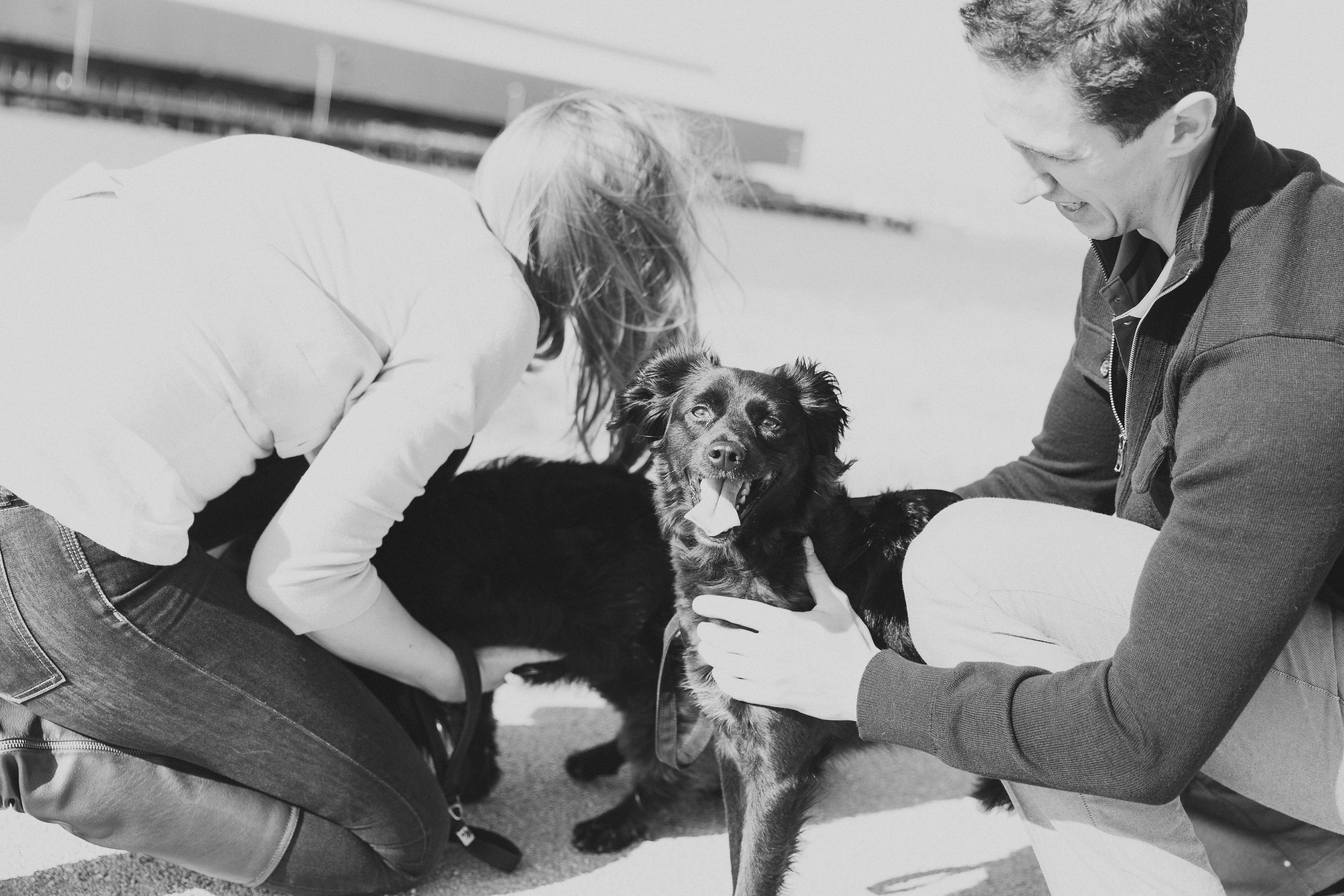Neutrality on leash is one of the most important training factors for working with a dog reactive dog. Too often I see people insisting their dog meet another dog on the end of a leash, when in fact these types of interactions can exacerbate aggression. Teaching your dog to focus on you while walking, and being able to redirect attention if a trigger should arise, is paramount to being able to take any dog into new places, regardless of their level of sociability. For a dog with very heavy leash reactivity though, this can be a challenging task to train, so working with a professional can be extremely helpful when working with a dog that has already developed these problems. With puppies or young dogs, I never give them the chance to leash greet new dogs, so they never see it as an option on a leash. This helps to discourage bad habits from starting and bad interactions from occurring.
Handler engagement is another very useful tool in working a dog aggressive dog around triggers. Teaching a dog to focus (give eye contact) to you instead of fixating on triggers is a great skill. If a dog continues to think they have to interact with stimuli in their environment, many dogs will react more quickly than if they are only giving their handler attention. Work up to close proximity – always begin with distractions farther away so the dog can be successful there, and as they improve and maintain consistency, begin to work your way closer to the distractions.
“…as they improve and maintain consistency, begin to work your way closer to the distractions.”
Keep in mind that while these are great starting points, in any case that is dealing with aggression, is it very important to work closely with a professional trainer who is known for their ability to work with these challenges. Many chain pet stores are not equipped to work with aggression successfully, so often more specialized type training is necessary.

Do you have coping mechanisms with your aggressive pup? Share below.
Join us every week (usually Wednesday’s!) for more tips from Marie-and learn more on our About page.
